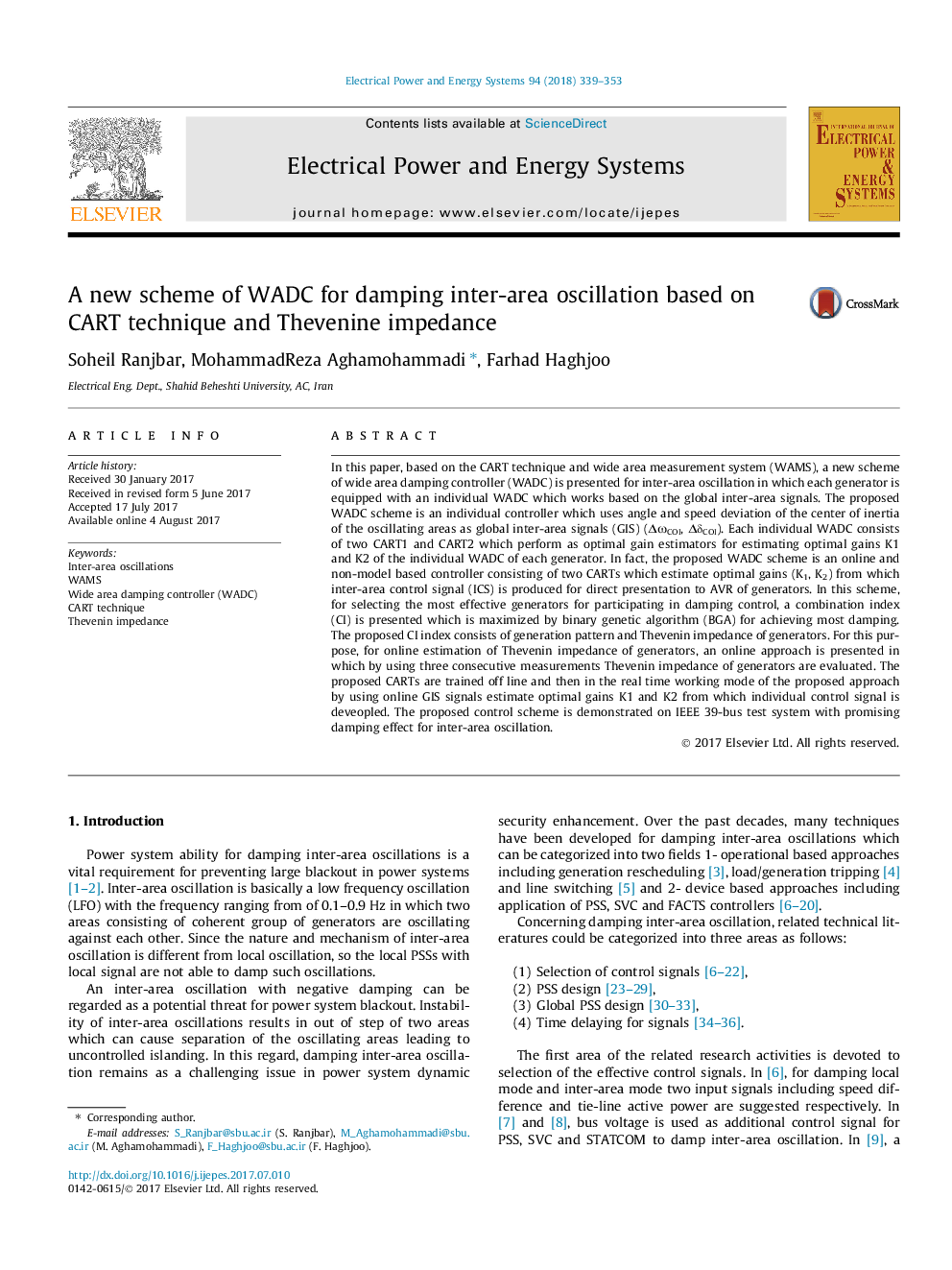| Article ID | Journal | Published Year | Pages | File Type |
|---|---|---|---|---|
| 4945600 | International Journal of Electrical Power & Energy Systems | 2018 | 15 Pages |
â¢A new approach based on WADC is proposed for damping inter-area oscillations.â¢A new scheme based on individual WADC for each generator is proposed.â¢CART technique is used for estimating optimal gains of individual WADC controller.â¢A combination index is proposed to find the most effective individual WADCs.
In this paper, based on the CART technique and wide area measurement system (WAMS), a new scheme of wide area damping controller (WADC) is presented for inter-area oscillation in which each generator is equipped with an individual WADC which works based on the global inter-area signals. The proposed WADC scheme is an individual controller which uses angle and speed deviation of the center of inertia of the oscillating areas as global inter-area signals (GIS) (ÎÏCOI, ÎδCOI). Each individual WADC consists of two CART1 and CART2 which perform as optimal gain estimators for estimating optimal gains K1 and K2 of the individual WADC of each generator. In fact, the proposed WADC scheme is an online and non-model based controller consisting of two CARTs which estimate optimal gains (K1, K2) from which inter-area control signal (ICS) is produced for direct presentation to AVR of generators. In this scheme, for selecting the most effective generators for participating in damping control, a combination index (CI) is presented which is maximized by binary genetic algorithm (BGA) for achieving most damping. The proposed CI index consists of generation pattern and Thevenin impedance of generators. For this purpose, for online estimation of Thevenin impedance of generators, an online approach is presented in which by using three consecutive measurements Thevenin impedance of generators are evaluated. The proposed CARTs are trained off line and then in the real time working mode of the proposed approach by using online GIS signals estimate optimal gains K1 and K2 from which individual control signal is deveopled. The proposed control scheme is demonstrated on IEEE 39-bus test system with promising damping effect for inter-area oscillation.
